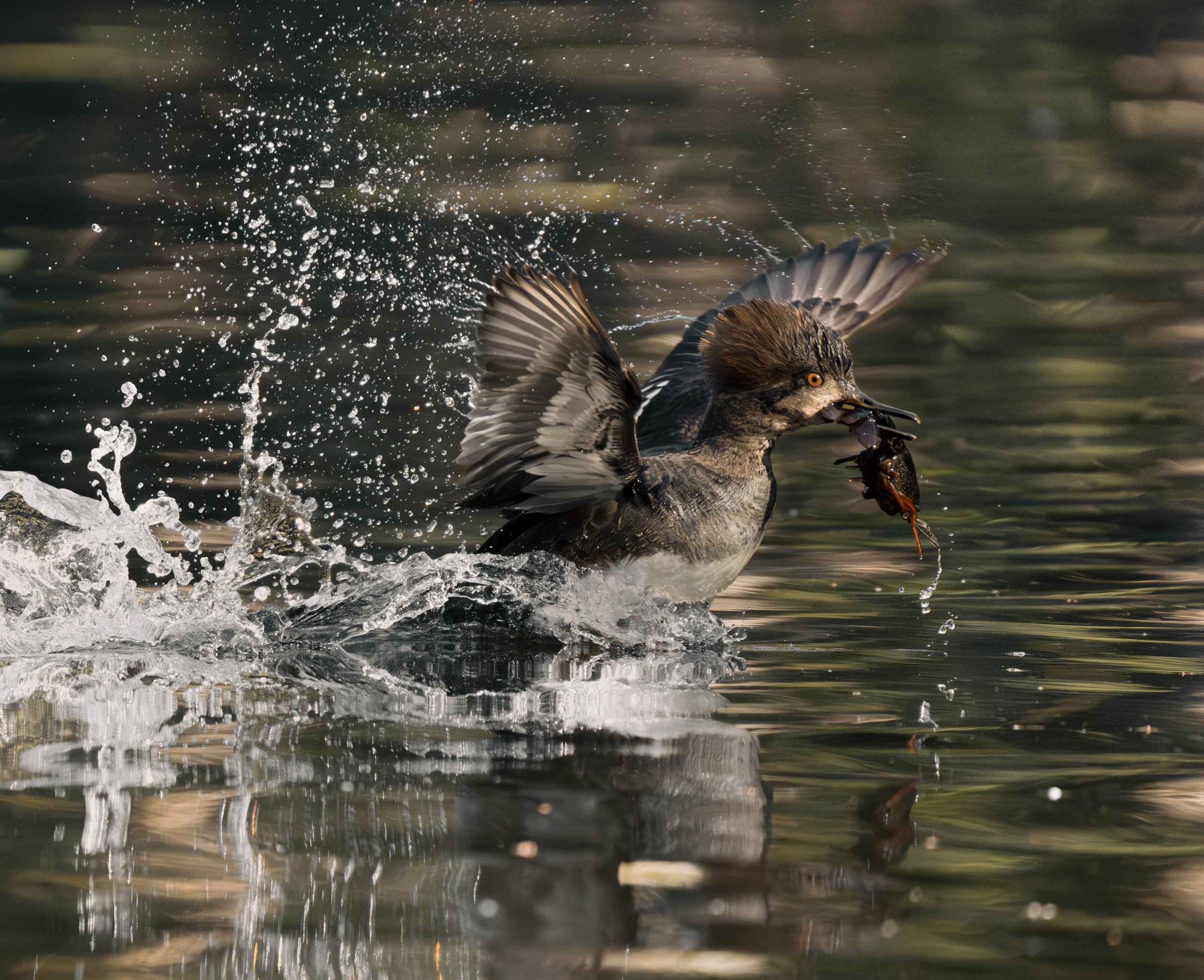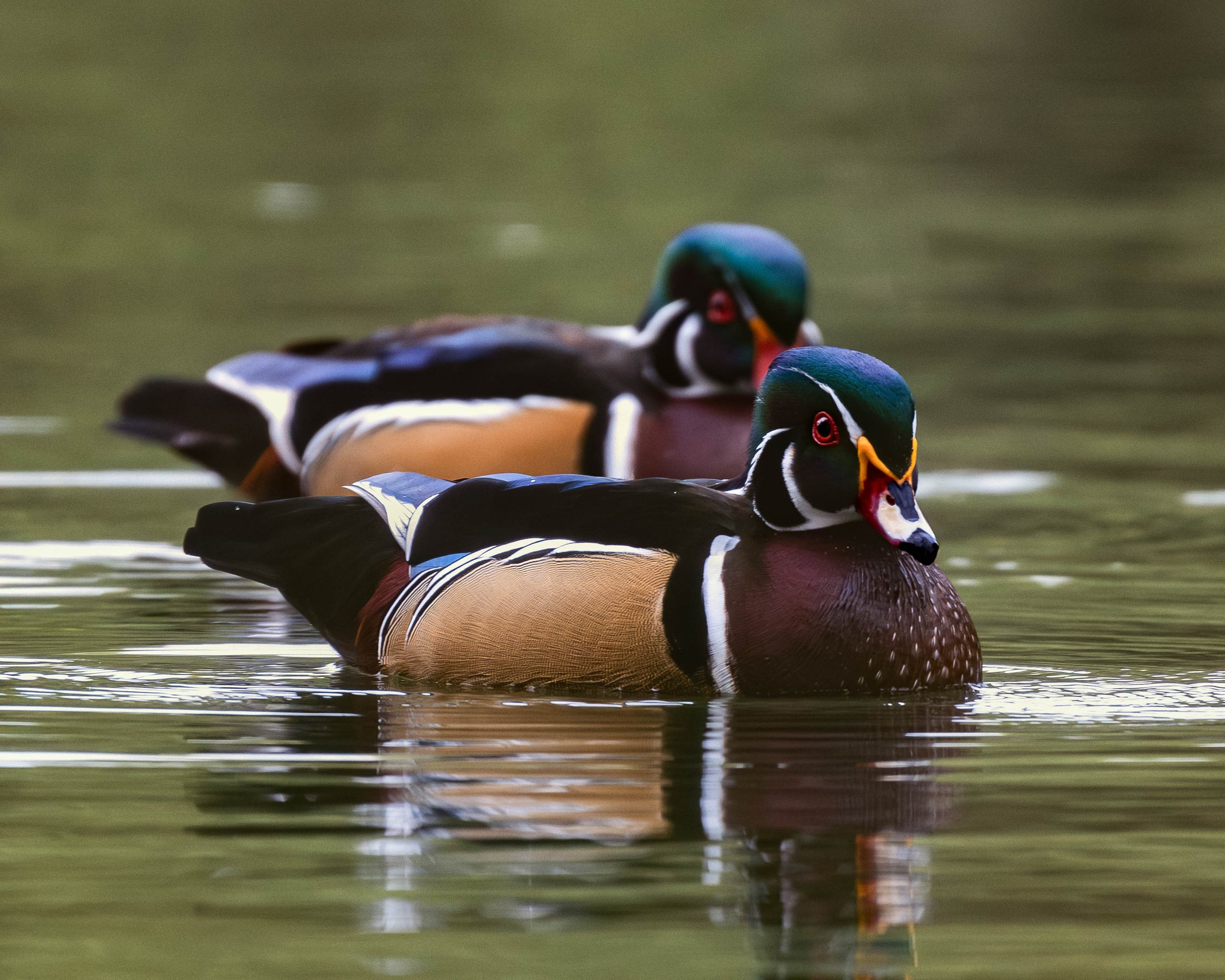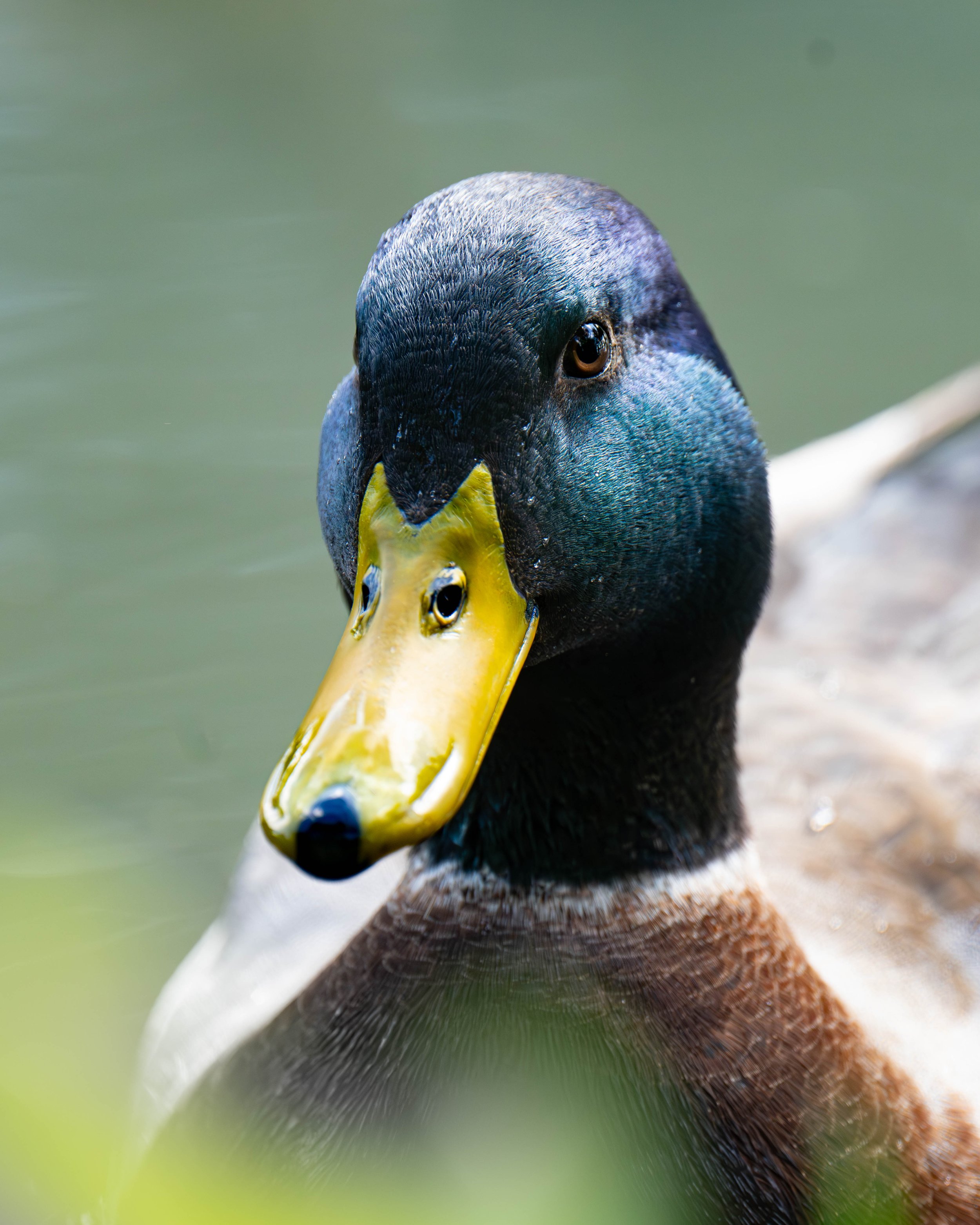
Ducks of Southern California.
“The problem, then, is how to bring about a striving for harmony with land among a people many of whom have forgotten there is any such thing as land, among whom education and culture have become almost synonymous with landlessness. This is the problem of ‘consevation education.’”
~ Aldo Leopold
Wood Ducks
Wood Ducks capture eyes everywhere with their vibrant and vivid. colors. Look at that yellow around the female’s eyes! Not only do they have beautiful colors, they are so interesting to watch! They sit in trees, talk loudly, and often show off their beautiful colors confidently. According to California Waterfowl, wood duck populations were dwindling towards extinction due to nesting habitat shortages because these unique ducks nest in holes in trees. Since discovered, there has been a movement to create wood nesting boxes for these guys, and they love it! Proving how effective conservation interventions can be, the CDN said in their Wood Duck Report, “…a 16% increase in the numbers of ducklings hatched. With nearly an additional 26,000 ducklings hatched in the past year from the California Wood Duck Program's boxes since the program's inception in 1991, that brings our total number of ducklings closer than ever to the long-awaited milestone of 1 million.” What an inspiring conservation story!
Hooded Mergansers
Hooded Mergansers are also a sight to see, especially the males. It’s easy to see how the “hooded” name has stuck. These guys also nest in trees, maybe it’s because they all want to hide their vivid colors while incubating? Their diet consists of crayfish, small frogs, fish, etc. This specific group of Hooded Mergansers has taken residence at my local arboretum, and they are so fun to photograph. They LOVE crayfish, almost guaranteeing that if you sit and watch them for a few minutes, one will have a snack. I have returned to the arboretum again and again just to witness these guys in action, eating lunch, stealing each other’s lunch, and mating. I had no idea ducks could be so cool.




Can’t Forget the Mallards!
And an Egyptian Goose?
Man, was I shocked when I showed up to photograph ducks, and this guy was there. I was calmly spending time with the Wood Ducks when all of the sudden, I hear a “SQUAWK” on repeat, demanding attention. Who was it? I really didn’t have the option to go check him out, he called me over. I find the source of the sound, and I search him on Audubon, an Egyptian Goose? In Southern California? In the Wild?! I had to know more. Native to Africa, these odd ducks have escaped captivity and established residencies in few spots throughout North America. It’s easy to see how these guys were able to sneak away, they are strong, resilient, territorial, and confident. I always have an extra tinge of respect for birds that have escaped captivity and adapted to new environments. The resilience of nature is admirable.
Read & See about more birding in LA here: Birding at the LA Arboretum
Photos taken by Laura Czaplicki on a SONY A7RIV and edited lightly in Lightroom.






